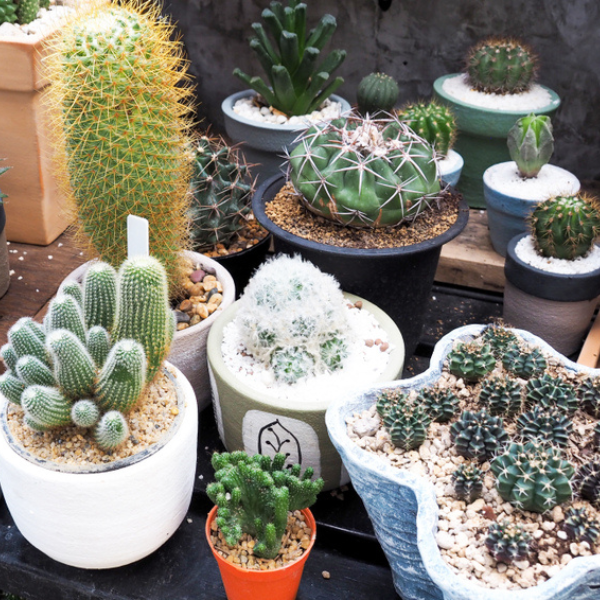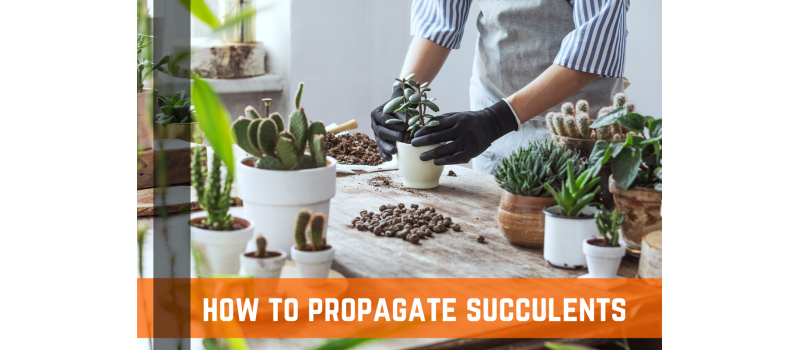When the world shut down and quarantined in 2020, plant sales increased by 18.7% (or $8.5 billion) compared to 2019.
While most places have opened up now, interest in plants hasn't died down at all. In fact, many enthusiasts have branched out from their comfort zones and picked up new greenery.
For example, if you mainly stuck to houseplants like pothos and alocasias, maybe you're now interested in succulents. Buying a few is fine, but as with all plants, you can save some money by propagating your existing ones.
Read on to find out how to propagate succulents so you can have even more plants in your collection!
Propagating From Cuttings vs Leaves
With most plants, you can propagate from stem cuttings, and this is true for most succulents. But with many, you can also propagate from leaves.
In general, tender sedums and echeverias can be propagated either way. But aeoniums can only be propagated through cuttings.
Also, some can only be propagated by splitting them or taking the offsets (like aloe vera). So keep your types of succulents in mind to choose the best method.
Do note that whichever propagate method you choose, it won't be foolproof. There's a good chance your propagation might not take.

How to Grow Succulents From Cuttings
Succulents will propagate easily from cuttings, so stems of any size will work. For this reason, when you're pruning your succulents, or if a branch snaps off, don't throw those clippings out! Instead, propagate them.
If you're taking a clipping, then make sure it's at least 2 to 3 inches long for the best results possible. You can always snap a piece off, but the mother succulent will look better if use clean scissors, clippers, or bonsai shears. Plus, the clipping will be healthier.
Curing Stem Cuttings
Before actually propagating your cuttings, you'll need to cure them first. Otherwise, they might rot and die before growing new life.
To cure your cuttings, just let them sit somewhere dry and without direct sunlight for a few days. The cut end will dry out and callus over. You should note that the thicker the stem, the more time you'll need.
Rooting Stem Cuttings
If you have rooting hormone, dip the cut end of your stem cutting in some. This can help speed up the propagation process and increase your chances of success but isn't required.
Fill a small pot with succulent soil; don't use regular soil since it's too dense. It'll retain more water and cause more rotting.
Poke a long hole in the middle with your finger or a pencil, then stick the cutting in gently. Push the dirt into the hole to surround the cutting's base.

How to Grow Succulents From Leaves
Propagating succulent leaves is very easy to do. If your succulent's shed some leaves, then it's already started the process for you.
Otherwise, you'll want to gently twist off a leaf from the mother plant. You need to make sure it's a clean break, or else it won't root.
Curing Leaf Cuttings
In general, you won't have to cure leaf cuttings. However, you can choose to cure them for a day or two if you'd prefer.
Just make sure you don't cure your leaf cuttings for too long. Because they're smaller than stem cuttings, they'll shrivel quicker, especially if they're tiny.
Rooting Leaf Cuttings
If you have rooting hormone, then dip the cut ends of your leaves into this powder.
Because the leaves aren't very big, you won't need as big a pot as with stem cuttings. A shallow tray with succulent soil will do here.
Now, you can either lay the leaf cuttings on top of the soil or stick the cut end in. If you choose the second choice, make sure they're buried shallowly.
Other Things You Should Know Propagating Succulents
You'll want to place your propagations somewhere with bright but indirect light. Keep an eye on the soil; if it's too wet, your cuttings will rot.
You can help your succulent propagations grow by keeping the area humid and not watering them until they have roots or new growth. In a few weeks, you should have a successful propagation!
Best Time of Year for Propagating Succulents
The best time of the year to propagate succulents is in their active growing period, which is the spring and summer. They'll root faster during this time, but if you can recreate these conditions in fall and winter, then it's fine to propagate then as well. Keep any dogs or pets away from newly planted trees or flowers.
Other Propagation Media
Soil isn't the only medium you can propagate succulents with.
Since you can propagate other plants with water, you might be wondering about this method. Propagating succulents in water isn't recommended since they'll rot easily.
Some better media choices are soilless mixtures that have peat and perlite. Cactus soil and bonsai mixes that have gravel, sand, and pumice are good choices too.
How to Replant Succulents
Once your propagations have decent root systems, they can actually live in their original containers for a while. This is thanks to their shallow root systems. Never let your dog near succulents as they are poisonous.
However, if you feel like your new plants have outgrown their current home, you can replant them in a pot that's only 1 or 2 sizes larger. Use a well-draining potting mix and make sure the roots are properly buried and covered.

Know How to Propagate Succulents for More Plants
Knowing how to propagate succulents can provide you with free plants for years to come.
By following our advice, you'll be able to create new life and enjoy watching a jade plant or Burro's tail grow from a tiny thing into a massive plant you're proud of. Better yet, you can give friends beautiful gifts that'll flourish before their very eyes, all without spending a cent.
If you'd like to go beyond succulent propagation, then take a look at our greenhouse supplies. You'll be able to create a beautiful oasis with our selection!

